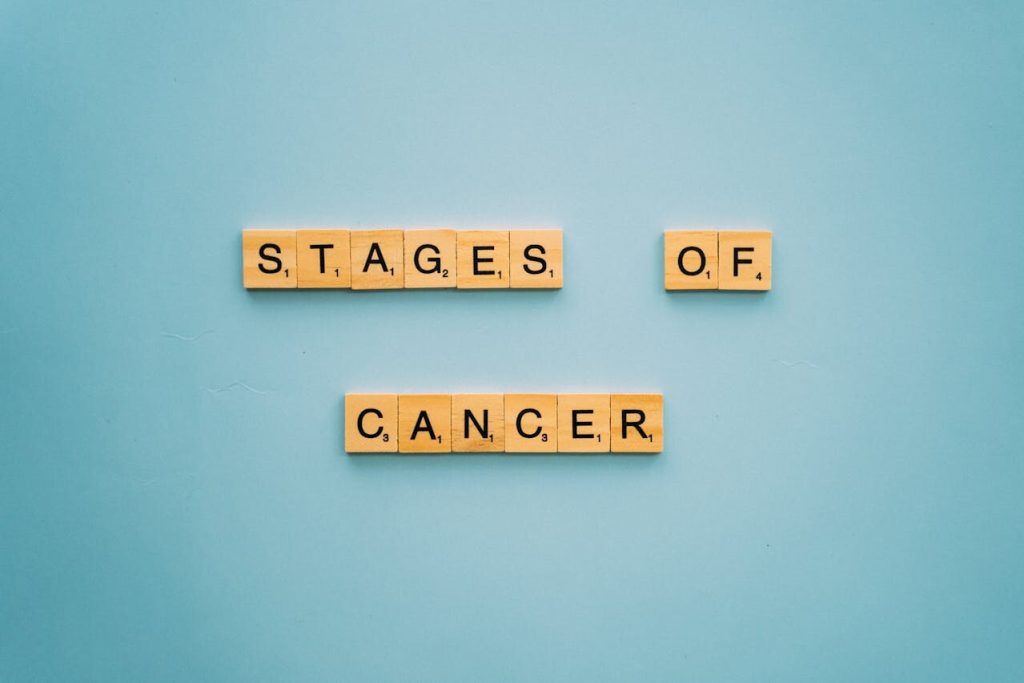Red light therapy is a form of therapy that uses low-level light emitting diodes (LEDs) and wavelengths in the red light spectrum to stimulate cellular function. While the use of red light therapy has gained popularity in recent years for its potential to treat a variety of conditions, including skin issues and joint pain, its effectiveness in cancer treatment remains a subject of ongoing research.
Interest in exploring the connection between red light therapy and cancer treatment has grown due to its potential ability to reduce inflammation, promote healing, and enhance overall well-being. This article will explore the current research surrounding red light therapy for cancer care, its potential benefits and limitations, and how it is used at the Cancer Center for Healing in Irvine, CA, as part of their integrative cancer treatment programs.
Key Takeaways:
- Red light therapy uses low-level light emitting diodes (LEDs) and wavelengths in the red light spectrum to stimulate cellular function.
- Research is ongoing to explore the effectiveness and safety of red light therapy as a potential treatment modality for cancer.
- Red light therapy may have potential benefits for cancer treatment, including reducing inflammation and promoting healing.
- The Cancer Center for Healing in Irvine, CA, offers a holistic approach to cancer care that includes red light therapy as part of their integrative cancer treatment programs.
Understanding Red Light Therapy
Red light therapy, also known as photobiomodulation, is a non-invasive treatment that uses low-level light emitting diodes (LEDs) to stimulate cellular function. This therapy involves the use of red or near-infrared light wavelengths in the visible spectrum ranging from 600 to 1000 nanometers. The light penetrates the skin to a depth of approximately 5 millimeters, where it can interact with cells and tissues to produce a range of beneficial effects.
When red light therapy is applied to the body, it triggers a process called photobiomodulation. This process involves the absorption of light energy by cells, which stimulates multiple biological processes. Red light therapy promotes cellular energy production, reduces inflammation, promotes tissue repair, and enhances overall well-being.
Red light therapy is a promising modality for cancer treatment. Studies have suggested that red light therapy can effectively reduce cancer-induced side effects, such as inflammation and pain, and increase the success rate of cancer treatment.
There are no known side effects of red light therapy, making it a safe and non-invasive therapy. Red light therapy can also be used in conjunction with other cancer treatments, such as chemotherapy and radiation therapy.
Red Light Therapy and Cancer Treatment
Research into the potential use of red light therapy as a treatment modality for cancer is ongoing, with some promising findings emerging.
One study published in the journal Photobiomodulation, Photomedicine, and Laser Surgery found that red light therapy was able to inhibit the growth of cancer cells in vitro. Another study published in the Journal of the American Osteopathic Association found that red light therapy helped improve quality of life in breast cancer survivors, particularly in terms of reducing fatigue and depression.
However, it is important to note that more research is needed to fully understand the effectiveness and safety of red light therapy in cancer treatment. The National Cancer Institute notes that while some studies have shown potential benefits, others have not shown any significant effects.
It is also important to consider red light therapy as part of a comprehensive cancer care plan under the guidance of qualified healthcare professionals. While it may be a promising adjunct therapy, it should not be used as a replacement for conventional cancer treatments.
Red Light Therapy and Cancer Prevention
While much of the interest in red light therapy for cancer treatment centers on its potential to enhance healing and reduce inflammation, there is also growing attention on its use for cancer prevention.
Recent research suggests that red light therapy may help reduce the risk of certain types of cancer by boosting immune function and promoting overall cellular health. This is due to the way red light therapy works on a cellular level, stimulating mitochondrial function and supporting the body’s natural processes.
However, it’s important to note that red light therapy alone is not a substitute for healthy lifestyle choices such as a balanced diet, exercise, and avoiding known carcinogens. Rather, it may be used as an adjunct to a comprehensive approach to cancer prevention and risk reduction.
The Comprehensive Approach at the Cancer Center for Healing
The Cancer Center for Healing in Irvine, CA, takes a comprehensive approach to cancer care, focusing on integrative and holistic treatment modalities. Led by Dr. Leigh Erin Connealy, the center provides personalized care aimed at supporting the body’s natural healing abilities.
At the Cancer Center for Healing, patients have access to a range of integrative treatments, including red light therapy. This therapy is used in combination with other evidence-based treatments to support cancer recovery and enhance overall well-being.
Red Light Therapy at the Cancer Center for Healing
The Cancer Center for Healing, located in Irvine, CA, takes a comprehensive approach to cancer care, incorporating a variety of holistic treatment modalities into their integrative cancer treatment programs.
Red light therapy is one such modality that has shown promise in supporting cancer recovery at the center. Using low-level light emitting diodes (LEDs) and wavelengths in the red light spectrum, this therapy stimulates cellular function and promotes healing.
| Benefits of Red Light Therapy at the Cancer Center for Healing | |
|---|---|
| Reduces inflammation and pain: | Red light therapy has been shown to reduce inflammation and pain associated with cancer and its treatments, such as chemotherapy and radiation therapy. |
| Supports immune function: | Red light therapy has also been found to enhance immune function, which may help cancer patients better fight the disease. |
| Promotes tissue regeneration: | Red light therapy may also promote tissue regeneration, which can be especially beneficial for patients who have undergone surgery or radiation therapy. |
At the Cancer Center for Healing, red light therapy is often incorporated into individualized treatment plans for cancer patients to support their overall health and well-being during and after treatment.
One patient, John, shared his positive experience with red light therapy at the Cancer Center for Healing, stating, “I found the red light therapy to be incredibly beneficial in reducing my joint pain and inflammation. It also helped me feel more relaxed and calm during a very stressful time in my life.”
Safety and Side Effects of Red Light Therapy
When considering any form of medical treatment, it is important to understand the potential risks and side effects. Red light therapy, however, is considered a safe and non-invasive treatment modality with low risks for adverse effects.
According to research studies, red light therapy has been shown to have minimal to no side effects, and any reported adverse effects were rare and mild. These included temporary redness, warmth, and tingling sensations at the treatment site.
It is important to note that red light therapy should be avoided by individuals with photosensitivity or those who are currently taking medications that increase sensitivity to light. Additionally, pregnant women should consult their healthcare provider before undergoing red light therapy.
Overall, red light therapy is considered a safe and low-risk treatment option for cancer patients and should only be performed under the guidance of qualified healthcare professionals.
The Future of Red Light Therapy in Cancer Care
As the scientific community continues to explore the potential benefits of red light therapy in cancer treatment, the future looks promising.
Ongoing research aims to further explore the mechanisms behind red light therapy’s potential anti-cancer effects, as well as its role in managing cancer-related symptoms and improving quality of life for patients.
Additionally, advancements in technology may lead to the development of more targeted red light therapy treatments that can be tailored to individual patients based on their unique needs and cancer types.
With continued investigation and development, red light therapy may become an increasingly important component of comprehensive cancer care in the years to come.
Consultation at the Cancer Center for Healing
If you are interested in learning more about the integrative cancer treatment programs at the Cancer Center for Healing, you can schedule a consultation with their qualified healthcare professionals. During the consultation, you will have the opportunity to discuss your individual needs and explore the potential role of red light therapy in your cancer care plan.
To schedule a consultation, you can call the center at (949) 680-1880 or visit their website to fill out a contact form. The Cancer Center for Healing is committed to providing personalized care under the guidance of their experienced team, led by Dr. Leigh Erin Connealy.
Conclusion
In conclusion, red light therapy shows great potential as a complementary treatment modality for cancer care. While further research is needed to fully understand the efficacy and safety of red light therapy, its ability to promote healing, reduce inflammation, and support immune function make it a promising option for cancer patients.
The Cancer Center for Healing located in Irvine, CA, provides comprehensive and personalized cancer treatment programs that incorporate various holistic modalities, including red light therapy. Interested individuals can schedule a consultation with the center to learn more about their integrative approach to cancer care and how red light therapy may play a role in their individual treatment plan.
Overall, the use of red light therapy in cancer treatment represents a shift towards a personalized and integrative approach to care. It is important for patients to work closely with qualified healthcare professionals to determine the most effective and safe treatment options for their individual needs.
FAQ
Q: What is red light therapy?
A: Red light therapy is a non-invasive treatment that uses low-level light emitting diodes (LEDs) and specific wavelengths in the red light spectrum to stimulate cellular function and promote healing.
Q: Can red light therapy help with cancer?
A: Red light therapy is being studied as a potential treatment modality for cancer. Research has explored its effects on cancer cells, tumor growth, and overall treatment outcomes, but more investigation is needed.
Q: What are the potential benefits of red light therapy for cancer treatment?
A: Red light therapy may help reduce inflammation, promote healing, and enhance overall well-being in cancer patients undergoing treatment.
Q: Can red light therapy be used for cancer prevention?
A: Red light therapy may potentially help boost the body’s natural defenses, improve immune function, and reduce the risk of developing certain types of cancer. However, further research is necessary.
Q: How is red light therapy incorporated into cancer treatment at the Cancer Center for Healing?
A: Red light therapy is part of the holistic treatment approach at the Cancer Center for Healing. It is used in their integrative cancer treatment programs to support cancer recovery.
Q: What are the safety considerations of red light therapy in cancer treatment?
A: Red light therapy is generally considered safe and non-invasive. Reported side effects are rare, and precautions may need to be considered. However, it is recommended to consult with healthcare professionals before starting any treatment.
Q: What is the future potential of red light therapy in cancer care?
A: Ongoing research and advancements in the field of red light therapy show promise for its future potential in cancer care. Continued scientific investigation is necessary to fully understand its efficacy and role in cancer treatment.
Q: How can I schedule a consultation at the Cancer Center for Healing?
A: To schedule a consultation at the Cancer Center for Healing and learn more about their integrative cancer treatment programs, you can contact them at (949) 680-1880.






